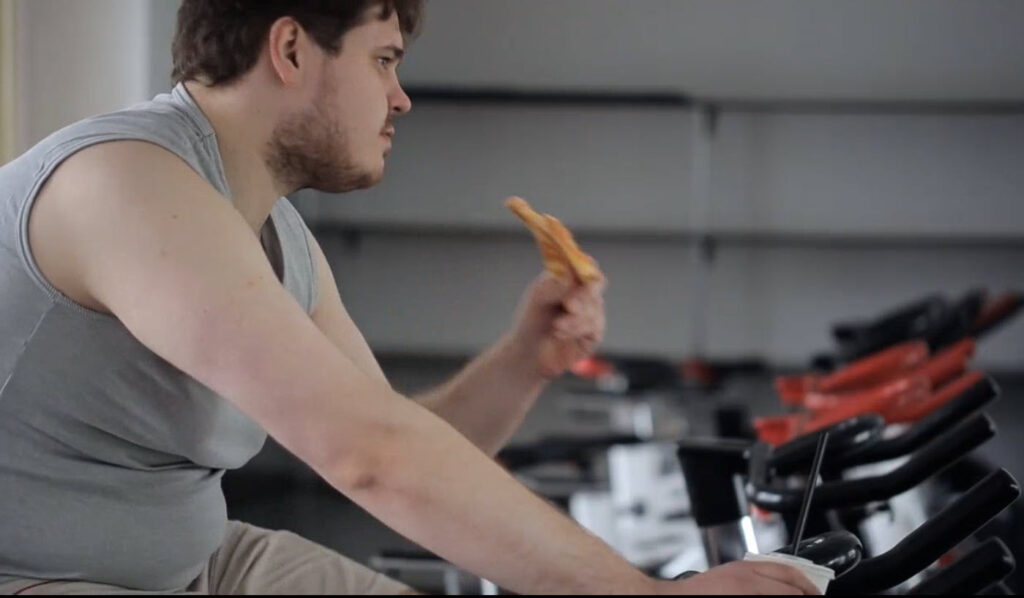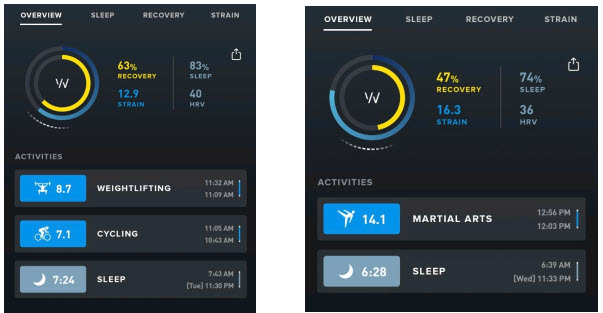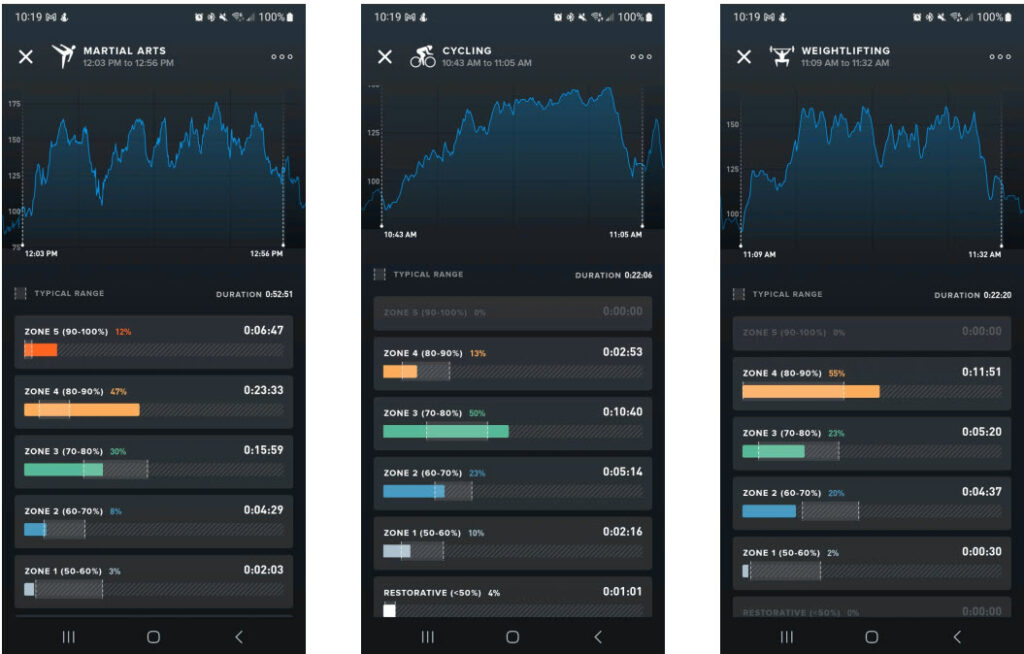by Mike Solito


I tested two main aspects of exercise most people do during the week to build strength and cardiovascular health. Riding a Peloton Bike and lifting weights.
I recently received a Whoop band, a fitness tracker that tracks the amount of stress (physical and mental) on your body versus recovery, which is tracked when you sleep.
The data pulls from cardio zones you put yourself through when working out.
- Zone 1. 50-60%
- Zone 2. 60-70%
- Zone 3. 70-80%
- Zone 4. 80-90%
- Zone5. 90-100%
Strain is the terminology that the app uses.
“Strain is the metric that summarizes the exertion placed on your body throughout the day. Measured on a scale from 0 to 21, strain is calculated based on the time spent in each personal heart rate zone. The average strain for members is 11.0. Strain can be achieved through training or non-exercise activities like cleaning or cooking.
Determined by your max heart rate, heart rate zones have varying weights in determining strain. Strain is logarithmic – the higher your strain gets, the harder it becomes to build more. So while periods of very intense training (e.g., training in zone 4-5) can boost fitness gains, it can also decrease your HRV (heart rate variability) and next day recovery.”
I have been doing a 6-week test to compile my data to use for this study. I used 1 hour a day to work out because spending more than that is just not sustainable while working full time and taking care of twin toddlers. I also feel most working people don’t have more than an hour to commit to working out daily.
The Training Begins
When riding the bike, I often push myself as hard as possible from the halfway point to the end, always working up a good sweat and lifting weights for a half hour after the bike rides. Rotating between arms/chest/back/shoulders.
On most days, I average a weightlifting strain score of about 8 and a 7.1 for cycling. Still, those numbers don’t add together for the day a total of 12.9 which is about the top 20% for my age group of 40-50-year-olds.
My strain score would skyrocket on the days I would train in Kung fu. Usually up to 14.1 by the end of the hour, making the days strain much higher. I would do the same 1 hour of training and only do forms; I have yet to test fighting or drills. The two images show the time in each exercise program and the strain I was building up.

Conclusion
The following three images display the cardio levels I achieved during each exercise.
After researching the data, I noticed the times for cycling and weightlifting are a little off because it took a good 10 minutes on each exercise to raise my heart rate enough for the app to start picking it up. I also didn’t need any equipment for kung fu. However, for biking and lifting weights, I did need equipment. I used a $2500.00 Peloton Bike with a $ 40 a month subscription, and for weights, I used dumbbells ranging from 20 lbs. to 30 lbs.
As you can see, I could not reach 90 to 100% in either weightlifting or biking. However, I could easily reach it doing Kung fu and maintain it for almost 7 minutes.
All in all, any exercise is good if you stick with it, but what factors make us disciplined to stick to a routine? I find the best part of doing a martial art such as kung fu is that I feel like I’m learning something every time I train. I’ve been doing martial arts my whole life and kung fu for 23 years. Every time I train, I grasp a new concept or learn a small detail about a technique that keeps me wanting to train more and harder.
